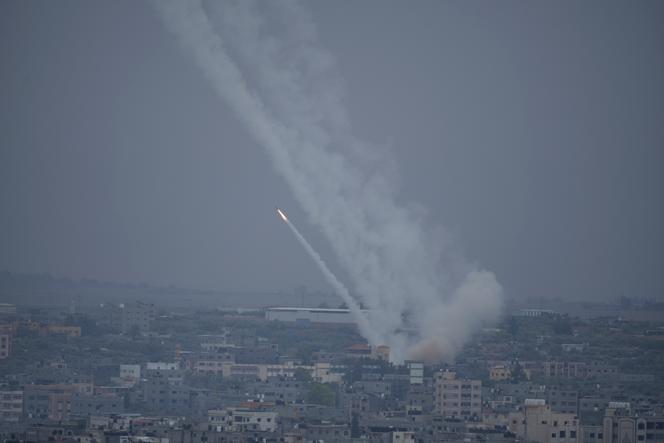


The Hamas assault on Israel began at dawn on Saturday, October 7, with a swarm of drones attacking Israeli army observation towers scattered along the Gaza Strip. While the introduction of these grenade-dropping quadcopters of civilian origin, or the Iranian-designed kamikaze drones, was a first for the Islamist movement, it marked the culmination of years of effort by Hamas to produce effective weaponry of its own.
From the 2003 deaths of an initial team of developers killed in an Israeli raid in Gaza to the December 2016 assassination in Tunisia of Mohammed al-Zawari, the man in charge of the movement's remotely piloted vehicle programs, to the April 2018 killing of engineer Fadi al-Batsh in Malaysia, Israel has been relentless in its attempts to curb the group's attempts to establish its own independent arms development and production capability.
"Hamas is now manufacturing a large part of its own weapons, expanding its research, developing drones and unmanned underwater vehicles, engaging in cyber warfare and on the cusp of graduating from unguided rockets to precision GPS-guided drones and missiles," summarized a study by the Jerusalem Center for Public Affairs published in August 2021.
To cover the advance of its commandos on the ground on October 7, Hamas unleashed a barrage of 2,500 rockets. This was an unprecedented number for any Palestinian group, the Islamist movement having acquired the production capacity to replenish its arsenal after each confrontation with Israel. Iran's role in this development did not escaped the attention of Israeli intelligence or ballistic weapons experts. "We see it in the volume of projectiles Hamas is able to fire, the intensity of those shots and the coordination between them, which is greater than we've seen in the past," wrote Ian Willams, deputy director of the anti-missile project at the Center for Strategic and International Studies in Washington. In the absence of materials available in the enclave, which has been under blockade since 2007, the precision of these devices remains rudimentary.
"Reports on the rocket arsenals of Palestinian factions in Gaza regularly cite Iranian assistance in local manufacture. However, closer examination of Iranian sources, documents likely leaked by Israeli intelligence (...) reveal a strategy of empowering Iranian proxies that is more comprehensive than previously thought," wrote Fabian Hinz, a research fellow at London's International Institute for Strategic Studies, in a report on Iranian weapons proliferation in 2021. "Also, a special development effort seems to be aimed at creating simple artillery rockets and short-range-missile systems and production units custom-tailored for local production," he added.
You have 57.29% of this article left to read. The rest is for subscribers only.
